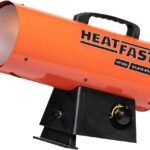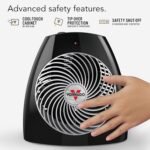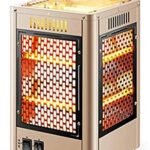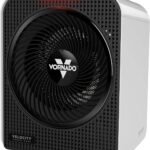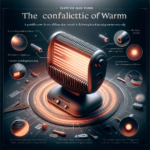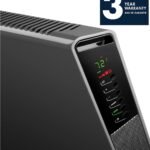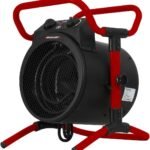In the fascinating world of thermal systems, the heat exchanger stands out as a critical component that is perhaps more important than most people realize. This article will focus specifically on the essential safety device built to prevent overheating failure of the heat exchanger. You’ll learn about the mechanics behind its operation, why it’s so crucial in maintaining system equilibrium, and the steps you can take to ensure it remains in tip-top shape. Indeed, understanding the operation of this underrated and ever-dependable appliance is enlightening and, in its way, quite empowering. Let’s set out on this journey to uncover more about this hidden gem in the realm of thermal systems!
Definition of Overheat Failure in Heat Exchangers
An integral part of several industries, heat exchangers perform the critical task of transferring heat from one medium to another. Overheat failure refers to an adverse condition where the heat exchanger surpasses its maximum allowable temperature. This might not seem catastrophic at first glance, but a deeper look into its repercussions reveals potential equipment damage, productivity loss, and safety risks.
Understanding Overheat Failure
At an operational level, comfortably interfacing with heat exchangers requires you to understand technical details, the chief among them being inevitable overheat failures. Consider layered within the core of every heat exchanger is a delicate balance between high-efficiency heat transfer and rigid temperature thresholds. Once the operational temperature skyrockets beyond the maximum rated value, an overheat failure ensues.
Potential Risks and Consequences of Overheat Failure
Overheat failure can prove to be detrimental not just to the system but also to the environment and individuals in the vicinity. The risks range from the sudden cease of operations, costly repairs, and at times, irreversible damage to the heat exchanger. Additionally, overheating can also increase the risk of fire, explosions, or release of harmful substances, posing serious threats to human and environmental safety.
Role of Safety Devices in Heat Exchangers
Ensuring the efficiency and longevity of heat exchangers is largely predicated on the integration of safety devices. These components play a vital role in preventing, detecting, and mitigating overheat failures.
The Importance of Safety Devices
Safety devices in heat exchangers serve as the last line of defense against overheat failures. They monitor the system’s temperature, pressure, and flow rates, and take corrective measures when these exceed the preset safe levels. In essence, they safeguard the system and the environment from the hazardous consequences of overheat failure.
How Safety Devices Contribute to the Functionality of Heat Exchangers
Safety devices not only protect heat exchangers but also significantly contribute to their efficient operation. By maintaining flow rates, temperature and pressure within optimal levels, they promote the smooth operation of the heat exchanger. Furthermore, they assist in preventing premature wear and tear of the exchanger, thereby preserving its functional lifespan.
Temperature Pressure Relief Valves
Among the variety of safety devices used in heat exchangers, temperature pressure relief valves are highly essential. They serve as the guardian against excess pressure and temperature conditions.
Specifics about Temperature Pressure Relief Valves
Temperature pressure relief valves are designed to automatically release pressure or drain fluid when the temperature or pressure rises above a predetermined limit. This helps prevent potential damage from pressure buildup or overheating, thereby providing an effective failsafe against overheat failure.
How Temperature Pressure Relief Valves Help in Preventing Overheat Failure
These valves, owing to their unique design and function, allow rapid, automatic, and crucially controlled release of pressure. This deescalates the system’s excessive pressure levels, stopping overheating from spiraling out of control, and hence, they are indispensable for averting overheat failures.
Thermostatic Mixing Valves
Another integral safety device used in heat exchangers is the thermostatic mixing valve. The valve plays a crucial role in both monitoring and maintaining optimum temperature levels within the heat exchanger.
Key Features of Thermostatic Mixing Valves
The uniqueness of thermostatic mixing valves lies in their dual-functional feature. These devices can accurately gauge the temperature while simultaneously mixing the hot and cold mediums to achieve and maintain an ideal temperature. This dual function renders the thermostatic mixing valve an essential safety device for heat exchangers.
Roles and Transfer Mechanisms of Thermostatic Mixing Valves
By carefully balancing the hot and cold mediums in the heat exchanger, thermostatic mixing valves help maintain a consistent, optimal temperature. This action not only enhances performance but also minimizes the risk of overheating. Given the transfer mechanism involved, the simultaneous monitoring and maintaining operation contribute directorial to the heat exchanger’s optimal function.
Safety Shut-off Devices
Safety shut-off devices serve as emergency stop mechanisms in heat exchangers. These safety devices can intuitively sense imminent danger and cut off the supply to avert a potential catastrophe.
A Deeper Understanding of Safety Shut-off Devices
These are smart devices designed to act precisely in detecting anomalies. They are designed to shut off the system in the event of dangerously high temperatures or pressure, thereby adding an extra layer of protection to the exchanger.
The Effectiveness of Safety Shut-off Devices in Controlling Overheating
By intervening during anomalies and shutting down the system, these devices play a pivotal role in preventing the exacerbation of the overheating condition. Their functionality ensures that potential damage is kept at bay, ensuring the system’s longevity.
Thermal Cut-off Devices
Thermal cut-off devices are dedicated safety mechanisms designed to prevent overheating in heat exchangers.
Basic Operation and Structure of Thermal Cut-off Devices
These devices are made up of a temperature-sensitive fusible alloy and a lead-based contact structure. When the ambient temperature of the exchanger crosses a set limit, the fusible alloy within the device melts down, interrupting the electrical circuit, and thereby halting the operation.
Performance of Thermal Cut-off Devices against Overheating
Since thermal cut-off devices respond quickly to a spike in temperature, they can effectively help prevent an overheat failure. Under optimal conditions, this device safeguards the heat exchanger by interrupting the operation before any significant damage is dealt.
Fusible Plugs
Another noteworthy safety device used in heat exchangers is the fusible plug. It’s a straightforward device but plays a critical role in heat safety management.
The Purpose and Functionality of Fusible Plugs
Fusible plugs, as the name suggests, contain a fusible element that melts at a specific temperature. When the heat exchanger’s internal temperature surpasses this limit, the fusible element in the plug melts, allowing the medium to escape and thus reducing the pressure.
The Role Fusible Plugs Play in Preventing Overheat Failures
These straightforward devices serve as a vital line of defense in preventing heat exchanger overheat failures. By keeping the temperature and pressure within the safe parameters, fusible plugs aid in averting catastrophic overheating.
Understanding Overheat Failure Prevention
While the presence of safety devices goes a long way in preventing overheat failures, understanding and recognizing the early warning signs of overheat failure is equally crucial.
Recognizing the Warning Signs of Overheating
The key signs of imminent overheating might include increased pressure, irregular temperature fluctuations and even unusual noises from the heat exchanger. Continuous system monitoring and understanding the warning signs will assist you in taking timely corrective measures.
Procedures to Follow to Prevent Overheating
Overheating can be prevented by regular maintenance, continuous system monitoring, and ensuring the efficient functioning of safety devices. In case of any anomalies, prompt troubleshooting and repair should be done to return the system to its optimal working condition.
Mandatory Safety Standards and Regulations
For smooth and safe operations, heat exchangers and their safety devices must comply with the global safety standards and regulations set by industry authorities.
Heat Exchanger Safety Standards Globally
Many countries have established safety standards and guidelines for heat exchangers and their safety devices. These standards, by providing a comprehensive framework, ensure that heat exchangers operate safely and efficiently while minimizing the risk of overheat failures.
Regulations and Guidelines about Safety Devices Usage
Regulations dictate the mandatory usage of safety devices in heat exchangers. They stipulate the types of safety devices to be used, their placement, and their maintenance procedures, thus ensuring that all safety measures are adhered to for preventing overheat failures.
Maintaining and Troubleshooting Safety Devices
Routine maintenance and systematic troubleshooting of safety devices play a crucial role in ensuring the smooth function of heat exchangers.
Maintenance Procedures for Safety Devices
The life and efficiency of a heat exchanger are substantially reliant on the effective maintenance of the safety devices. This can involve frequent inspections to check for any signs of wear and tear, verifying the correct operation of the devices, and their regular cleaning and servicing.
Common Issues with Safety Devices and Solutions
Over time, safety devices may face problems such as clogging, wear and tear, or malfunctions. In such cases, adopting an appropriate troubleshooting approach can help resolve these issues. Depending on the severity of the problem, this could range from cleaning and minor repair to full-scale replacement.
In conclusion, overheat failures in heat exchangers, though perilous, can be positively managed and mitigated using a variety of safety devices. Adhering to global safety standards and maintaining these devices will go a long way in ensuring smooth operation and prolonged life of your heat exchanger. Remember, an ounce of prevention is worth a pound of cure.


